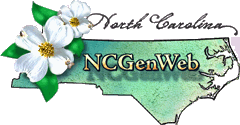I have started uploading some cemetery photos to the NCGenWeb Cemetery Gallery, which is on a separate server. See the links further down the page for the cemetery index pages, and links to some websites for some churches and their cemeteries.
Given the number of cemeteries and burials in Guilford, I cannot do any and all of the cemeteries at this time. However, if you have photos of markers in any of the cemeteries that I am working on right now, you may contact me to arrange to contribute them. If there is one that you think should be included, you can also contact me about that and suggest it. For now, I am going to focus on the older cemeteries, but Green Hill is an exception because there are so many burials there.
If someone wants to submit cemetery surveys, please remember not to violate the copyright of the extensive publications by Guilford County Genealogical Society. Submissions must be prepared independently of those publications. Also, a cemetery census that is in document or spreadsheet form is preferable, as documents or spreadsheets can be updated and replaced without having to update individual pages on this website.
It is also better to list the graves in a grid pattern, left to right, row by row, rather than alphabetically, so that a person can use that arrangement to locate a particular grave.
In its publication Guilford County Cemeteries, Volume I: Western Section, edited by Mary A. Browning, Guilford County Genealogical Society points out the following information:
Early Burials in Guilford County
As far as can be proven, the geographical area that became Guilford County in 1771 was settled by Europeans no earlier than 1745, and firm records of any settlement prior to about 1750 are scanty at best. Old Brick Church claims 1748 as the year of its founding. New Garden Friends had a meeting for worship in 1751 and a monthly meeting in 1754. Buffalo Presbyterian was organized about 1756. Other organized congregations of the Lutheran, German Reformed, Quaker, Presbyterian, Methodist, Baptist and other denominations proliferated in the years following.
If a church owned its land, it usually had a burial ground. However, well into the last quarter of the 19th century, family burial grounds were very common, and were often the preferred place of interment for those who owned them. Sometimes burials were made in the nearest graveyard, without regard to denomination.
In this age of mortuary services, we sometimes forget that burials were arranged promptly in years past. Funerals, on the other hand, might be completely separate events, preached in a leisurely fashion at a convenient time, when family and friends could gather. It was not unheard of for funerals to be preached for several family members on the same day; the deaths might have occurred over several years.
The number of grave locations that are lost forever must be very large. The reasons are easy to arrive at, if we give some thought to the matter. A factor in “missing” Quaker graves was the abhorrence of worldly display — which included tombstones. That accounts for the large seemingly empty space that often fills the middle of an old Quaker graveyard, but how to account for the similar “empty” space at the center of the burial ground of another denomination? Well, a glance at the stones still standing at the edges of the “empty” space shows they are very old, and is a clue that the “bare” ground is actually the site of the earliest burials, unmarked now for a variety of reasons.
The often modest tombstones put up in the depression years of the 1930s are a reminder of how many grieving families did not have the means to do even that over the past couple of centuries. Country graveyards have many homemade tombstones, and some have fared better than those of professional stonecutters in withstanding weather, neglect, unfenced farm animals, and — more recently — lawn mowers and vandals. And, even in this day of cemetery committees and caretakers, it is usually the immediate family that first notices and does something about a cracked or fallen stone. When the immediate family dies out or moves away, neglect hastens the day when a grave becomes unmarked. [pages 3-4 of the Introduction]
CEMETERIES
Cemeteries which are known to the community by more than one surname are listed under each of those surnames. Cemeteries described in the published sources as “Unidentified Family” will be found on the R-Z page.
Guilford County Public Library, Gravestone Inscription Index
Cemeteries of Old Guilford County, “A” through “H”
Cemeteries of Old Guilford County, “I” through “Q”
Cemeteries of Old Guilford County, “R” through “Z”
Green Hill Cemetery map from the City of Greensboro
Guilford Cemeteries ~ NC GenWeb Archives
Guilford County Political Graveyard
Guilford County Tombstone Project
Guilford County WPA cemetery files in NC Digital Collection — use search function or click on the pages in the left-hand menu, or click “print/view/save complete document” under “view and print” options
Find-A-Grave index page for Guilford County NC
North Carolina Office of Archaeology, Cemetery Survey & Protective Legislation
Association for Gravestone Studies



